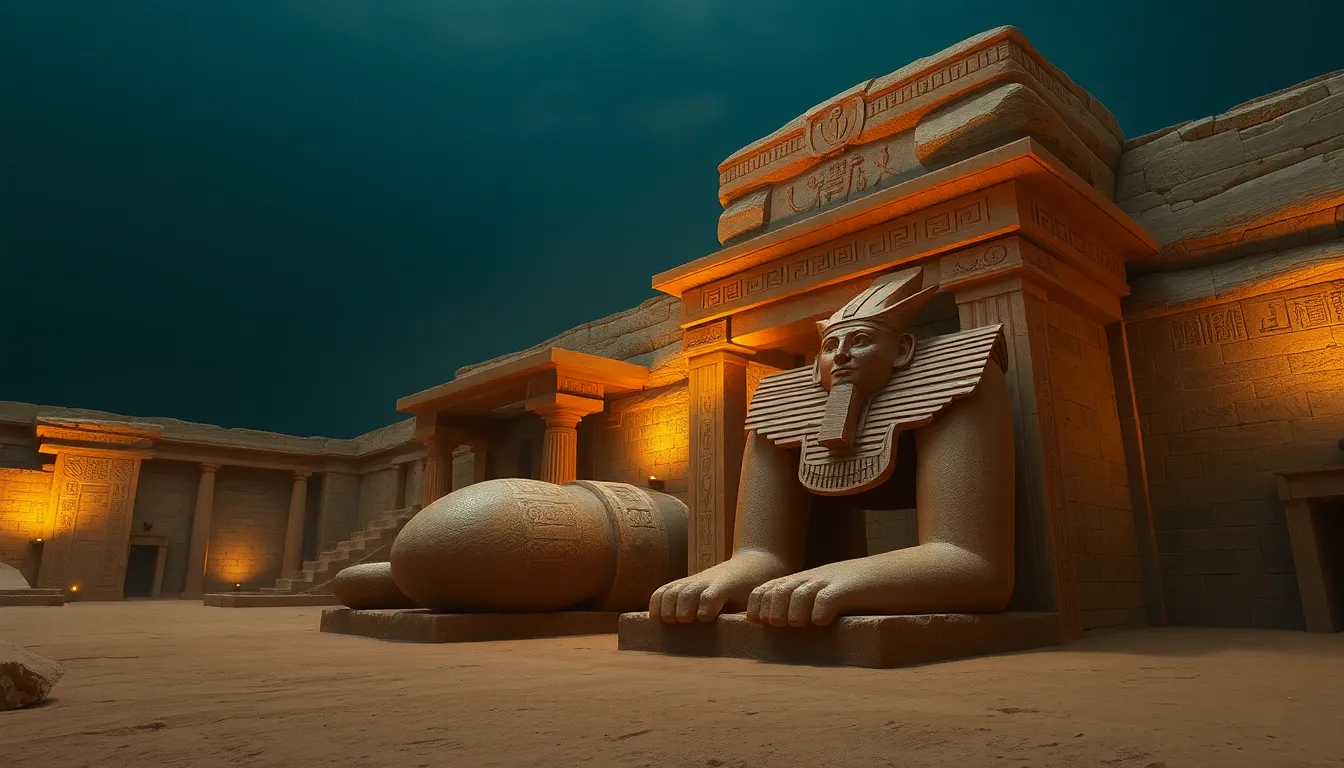The Tomb of Horemheb: A Royal Burial Rediscovered
I. Introduction
Horemheb, a prominent figure in ancient Egyptian history, served as a general and the last pharaoh of the 18th Dynasty. His reign marked a significant transition in Egyptian history, bringing stability after the tumultuous Amarna Period. The recent rediscovery of his tomb has sparked renewed interest in his life and contributions. This article aims to explore the historical context of Horemheb, the details of the tomb’s discovery, its architectural features, the artifacts found within, and the implications of these findings for our understanding of ancient Egypt.
II. Historical Context of Horemheb
Horemheb was born into a military family and rose to prominence during the reign of Akhenaten, the controversial pharaoh known for his religious reforms. After Akhenaten’s death and the subsequent brief reigns of his successors, Horemheb emerged as a stabilizing force:
- A. Background on Horemheb’s life and reign: Horemheb began his career as a military commander, leading campaigns against foreign invaders. He later ascended to the throne, where he focused on restoring traditional religious practices and centralizing power.
- B. His role in the transition from the Amarna Period to the 19th Dynasty: Horemheb played a crucial role in dismantling the changes initiated by Akhenaten, reinstating the worship of the traditional pantheon of gods.
- C. Contributions to Egyptian society and military: His governance emphasized military strength, infrastructure development, and the reestablishment of the legal system.
III. Discovery of the Tomb
The tomb of Horemheb was discovered in the Valley of the Kings, a site renowned for its royal burial grounds. The archaeological site revealed significant insights into the burial practices of ancient Egyptian royalty:
- A. Description of the archaeological site and location: Located near other notable tombs, Horemheb’s tomb is characterized by its elaborate design and strategic positioning.
- B. Timeline of the discovery process: The tomb was rediscovered in 2020 by a team of Egyptian archaeologists during a routine excavation.
- C. Key figures involved in the excavation: The excavation team was led by Dr. Zahi Hawass, a prominent Egyptologist known for his extensive work in the field.
IV. Architectural Features of the Tomb
The architectural design of Horemheb’s tomb reflects the artistic and cultural values of its time:
- A. Design and layout of the tomb: The tomb is structured with a long corridor leading to a burial chamber, adorned with intricate carvings and hieroglyphs.
- B. Unique architectural elements and their significance: Notable features include a grand entrance flanked by statues and a ceremonial hall, symbolizing the pharaoh’s power and divine status.
- C. Comparison with other royal tombs of the period: Horemheb’s tomb shares similarities with those of his predecessors, but it also showcases unique adaptations reflective of his reign.
V. Artistic and Cultural Artifacts
The tomb of Horemheb has yielded a wealth of artistic and cultural artifacts that provide insight into his beliefs and legacy:
- A. Overview of frescoes, carvings, and inscriptions found: The walls of the tomb are adorned with vibrant frescoes depicting scenes of daily life, religious rituals, and the afterlife.
- B. Interpretation of the art in the context of Horemheb’s beliefs and legacy: The artwork reflects Horemheb’s emphasis on traditional religious practices and his desire for immortality.
- C. Examination of grave goods and their symbolic meanings: Artifacts found include pottery, jewelry, and tools, all symbolizing the pharaoh’s status and the importance of the afterlife.
VI. Implications of the Rediscovery
The rediscovery of Horemheb’s tomb has significant implications for our understanding of ancient Egyptian history:
- A. Impact on understanding of the 18th Dynasty and Egyptian burial practices: The findings contribute to a deeper understanding of the rituals and beliefs surrounding death and the afterlife during this period.
- B. Contributions to the study of Horemheb’s reign and policies: The tomb provides insights into Horemheb’s governance, military strategies, and religious reforms.
- C. Insights into the political and religious landscape of ancient Egypt: The artifacts and inscriptions reveal the complex interactions between political power and religious authority during Horemheb’s reign.
VII. Preservation and Future Research
Efforts to preserve Horemheb’s tomb and its artifacts are ongoing, highlighting the importance of archaeological conservation:
- A. Current efforts in preserving the tomb and its artifacts: Conservation teams are working to stabilize the structure and protect the frescoes from environmental damage.
- B. Challenges faced in archaeological conservation: Issues such as humidity, tourism, and vandalism pose significant threats to the preservation of ancient sites.
- C. Future research opportunities and potential discoveries: Ongoing research may uncover further details about Horemheb’s life and the historical context of the 18th Dynasty.
VIII. Conclusion
The rediscovery of Horemheb’s tomb is a monumental event in the field of Egyptology, offering valuable insights into the life of one of ancient Egypt’s significant pharaohs. Horemheb’s legacy, characterized by military prowess and religious restoration, continues to captivate scholars and enthusiasts alike. As we reflect on the importance of this discovery, it is essential to foster continued interest in Egyptian archaeology and support preservation efforts to protect these irreplaceable cultural treasures for future generations.




